| Malcolm Cooke |
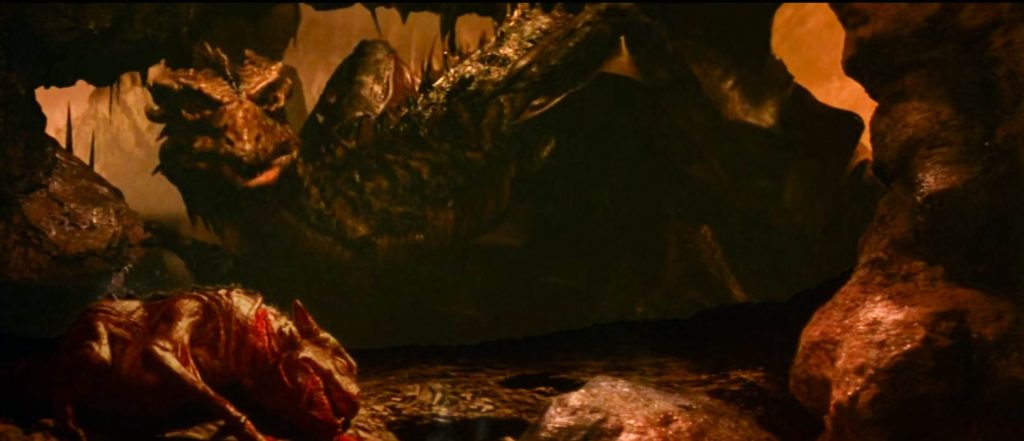
Dragonslayer plays at the Trylon Cinema from Friday, April 19th, through Sunday, April 21st. Visit trylon.org for tickets and more information.
In the misty and magical realm of Urland lurks a dark and evil creature: The last dragon, one thousand years old. It holds the surrounding land in the violent grip of fear. The king is forced to sacrifice virgins, chosen from a lottery twice a year, to sate the dragon’s sadistic appetites and keep its fiery wrath at bay. But the dragon was not created by dark sorcery. Instead, its origins lie in a different kind of magic—that of visual effects. In between creating the Wampas of The Empire Strikes Back and the Rancor in Return of the Jedi, the wizards at fabled visual effects company Industrial Light & Magic created a different movie monster: Vermithax Pejorative.
Unsurprisingly, Dragonslayer is best remembered for Vermithax. Purportedly costing 25% of the film’s budget, the creature is extolled by dragon connoisseur George R.R. Martin as his favorite dragon on film.1 2 The same goes for monster maniac Guillermo del Toro, who Dragonslayer director Matthew Robbins went on to collaborate with extensively, writing scripts for Mimic, Crimson Peak, and Pinocchio. Part of the dragon’s appeal is its wonderfully weird name Vermithax, Latin for “The Wyrm of Thrace,” and Pejorative added just for fun. However, most of the dragon’s intrigue comes from the use of a host of practical effects by ILM, the company founded by George Lucas through sheer force of wealth, and used to create the effects for Star Wars along with countless subsequent iconic films.
Despite how central it is to the film, Vermithax only appears in a handful of scenes. Early on, the dragon establishes a foreboding presence, never shown fully but only in bits and pieces; a shot of a scaled foot clawing its way out of a cave, a shallow focus view of its head from behind, or its hefty tail smashing down on a wooden cart.
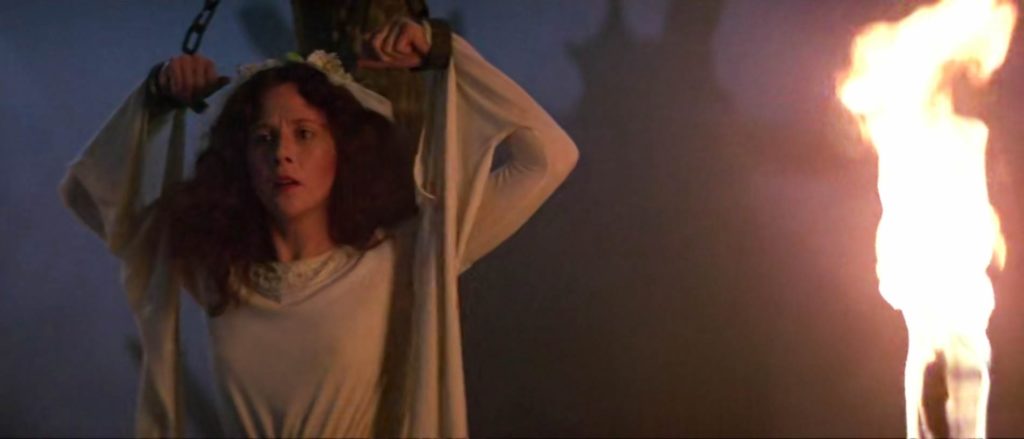
The most standout scenes of the whole film by far are those in which Galen Brandwardyn, the film’s protagonist, fights Vermithax in its lair atop a burning lake, wielding his magical spear and dragon scale shield. Here David Burnett’s design of Vermithax is on full display, vividly brought to life by ILM’s effects. The dragon is a crotchety and old thing, envisioned by the filmmakers as being constantly in pain due to its advanced age.3 The various models, including massive 16-foot head and neck portions, 30-foot wings, and a vast number of smaller puppets used for animation, are shown extensively and in their full glory. Further life is teased from the models with techniques like what the film’s VFX supervisor Dennis Muren calls “peekaboo lighting,” where elements are obscured and revealed as the dragon moves through the scene, making the model look more real and the sequence more emotionally resonant.
Another vital technique used copiously in the film is the now antique, but at the time revolutionary “go motion.”
Go Motion was developed in large part by ILM legend Phil Tippett, credited on Dragonslayer with the enviable title of “Dragon Supervisor.” Go motion was meant to address the jerky and staccato movements of traditional stop motion animation, resulting from the lack of motion blur. So how did ILM recreate the unique appearance of blurred movement with still photos of a motionless object?
Various techniques had already existed for decades, such as smearing the lens with Vaseline to simulate blur, or the inexact method of moving the animated object while taking each individual photo, which made it extremely difficult to perform the tiny and precise movements necessary for stop motion animation.
However, when working on The Empire Strikes Back, Tippet and other ILM engineers finally made a breakthrough. The solution was in many ways similar to the already existing “motion control,” a system used in Empire and much earlier, where camera movements could be recorded and programmed to be replayed by a computer with precision. With an exactly replicable camera movement, elements from multiple shots could be stitched after the fact—a technique used extensively in films like VFX guru Robert Zemeckis’ Back to the Future Part 2, where actors act across from various versions of themselves, all in the same shot with a moving camera. Go motion, on the other hand, used motors to move the puppets, which meant that movements could be programmed by a computer to occur exactly as the camera shutter fired, creating reliable and smooth motion blur in hand-animated puppets.
This technique saw limited use in Empire, such as in the animation of the Tauntaun. But for Dragonslayer, ILM decided to go all out. Adopting the on-set slogan “No-mo go-mo,” the decision was made to completely replace stop motion with go motion. Speaking about the decision, VFX supervisor Muren said:
“My feeling was, after Empire Strikes Back, effects that look like effects have a ceiling for people that are going to enjoy the movie. […] It had to get (to) some point where you’re gonna look at it and say […] it was so real or whatever, that it’s not just looking like a film that was made in the 70s, or anything like that. It had to go somewhere else.”
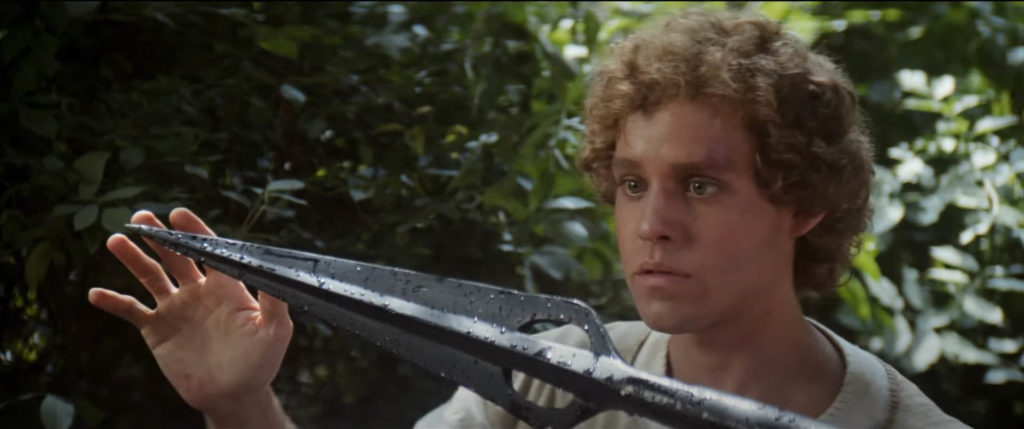
The film may have been on the cutting edge of visual effects for its era, but when it came to box office performance it was another story. Dragonslayer was a flop.
Some hard-to-verify accounts attribute the film’s lack of financial success to its association with Disney and a PG rating, leaving audiences expecting a bright and family-friendly tone, unprepared for the darkness and violence of the film world as well as the admittedly strange inserts of brief nudity.
However, the realization of the film’s dark fantasy world is one of its greatest strengths outside its effects. Set in a post-Roman, pre-Christian Britain, referred to only as Urland, the world feels primeval; a place where magic seems much more plausible. Shot at Pinewood studios near London and amongst real ancient castles, the beautiful British landscape is further expanded by dozens of gorgeous matte backgrounds made by Bruce Nicholson. Although American leads were mandated by an Americana-obsessed Disney, British veterans still give standout performances such as Ralph Richardson as the ancient and somewhat goofy sorcerer Ulrich, and Peter Eyre as the selfish, cowardly, yet still poised and regal King Casiodorus Rex (not to mention a small part by Ian McDiarmid as a Christian priest).
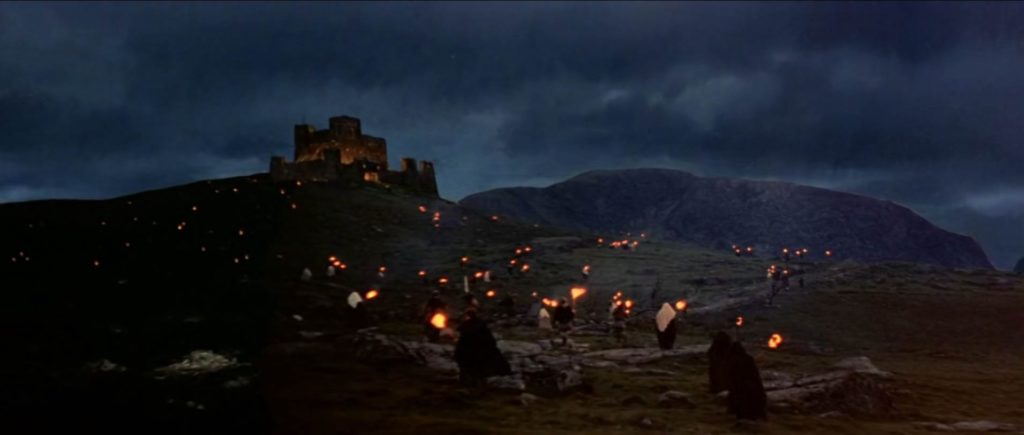
However, despite the dark world, the film’s lackluster box office performance could also be explained by some deficiencies in the story. Several sequences are confusing, such as the death of companion and servant of the sorcerer Ulrich, which is resolved in a strange manner, as well as a very abrupt and confusing escape from the dragon’s lair by Galen later in the film. The film draws deep from the well of Lord of the Rings and is inspired by the sorcerer’s apprentice portion of Fantasia, but does little to distinguish its story and protagonist from its fantasy inspirations.
Indeed, while the film was generally met with positive reviews, a vast majority of praise is directed towards the impressive dragon effects. Almost all of the discussion in the behind-the-scenes DVD extras on the 2023 4K release of Dragonslayer has to do with the creation of Vermithax, while scant time is spent discussing the story which makes up most of the rest of the film. The film has since developed cult recognition, but while people may remember Vermithax Pejorative, the characters of Galen Brandwardyn, Valerian, or Ulrich of Cragganmore appear to be far less enduring.
And so it seems Dragonslayer was destined for obscurity, at least when compared to its iconic bigger siblings with ILM effects, like the original Star Wars trilogy or Back to the Future. Industry legends like Tippet would move on from both stop-and-go motion to work on other iconic VFX-heavy films, with mainstream fanbases like Jurassic Park, or more cult-oriented appreciators like Starship Troopers, which used computer generation to create their creatures.
At the end of Dragonslayer, the rotting corpse of Vermithax lays at the base of a mountain (I would say this is a spoiler, but then again, look at the title). The King plants a sword in the beast’s belly and a Christian priest proclaims him to be “King Casiodorus Rex, dragonslayer!” A background plot in the film which includes the encroaching of Christianity into the world of Urland comes to fruition, with the pagan elements of mysticism giving way to a new era. Magic is receding from the world. Both the dragon and the sorcerer, ancient beings who shared a certain kinship, are no more. As director Robbins says:
“The implication is that it’s the last dragon. The end of a kind of fabulist tradition, storytelling and humanity believing in things like that. And the bittersweet fact that a great part of the human imagination was being set aside with the arrival of a different mentality.”
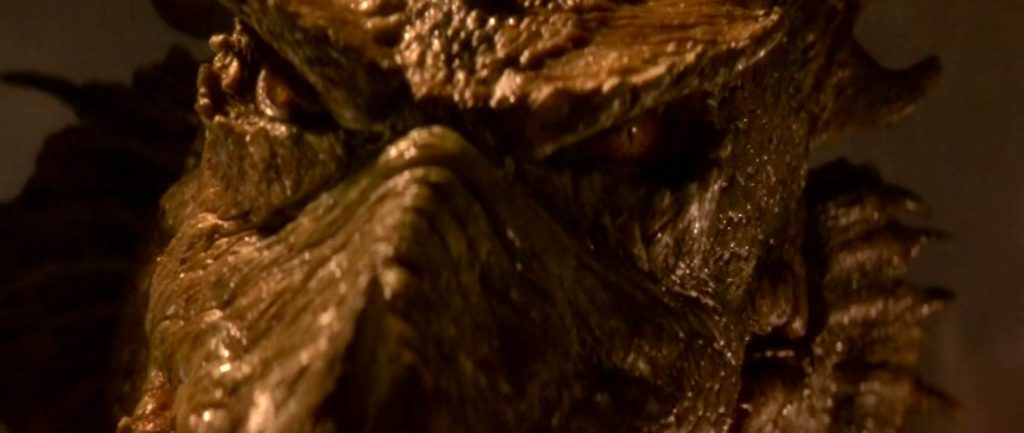
Vermithax is a relic of a bygone era; a time when mad wizards created magical beasts by casting magical incantations with names like “go motion.” It’s hard not to think of Dragonslayer as a historical relic; an artifact from a time when even the most expensive films still used puppets to create their creatures.
But even in an industry where films include thousands of shots that use computer generation and employ dozens of VFX companies on a single project, a fascination with practical effects remains. Nostalgia for the type of creatures and the techniques that bring them to life have spurred rekindled passion for traditional forms of VFX, like the release of Tippett’s own stop motion magnum opus Mad God—a film with a fabled 30-year production timeline (which you may have had a chance to see for yourself when the Trylon screened it a few years ago).
Vermithax may have disappeared, Dragonslayer may have been a commercial failure, and go motion may be a quaint technique in the modern CG world. Even still, people are drawn to them and the magic in their creation.
This dragon may have been slain, but its legend lives on.
References:
1 Fingeroth, Danny, 1981, “The Making of Dragonslayer in Dragonslayer – The Official Marvel Comics Adaptation of the Spectacular Paramount/Disney Motion Picture” Marvel Super Special, 1, 20, Marvel Comics Group, 1981
2 Martin, George R. R. “‘Game of Thrones’ Author George R.R. Martin’s Top 10 Fantasy Films” The Daily Beast, July 16, 2017, https://www.thedailybeast.com/george-rr-martin-game-of-thrones-writers-top-10-fantasy-films
3 “Dragonslayer, Making of and Behind the Scenes” Bonus Materials. 4k UHD Blu-Ray, Paramount Pictures. 2023. DVD.
Edited by Olga Tchepikova-Treon
